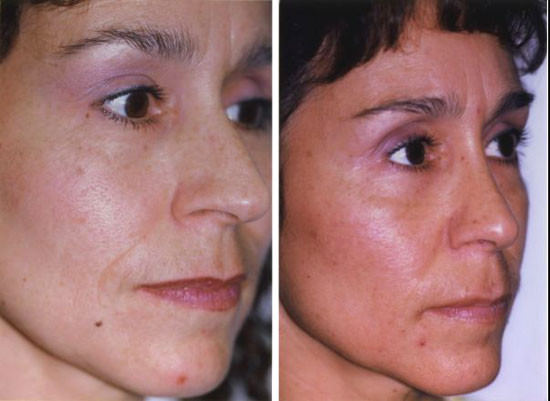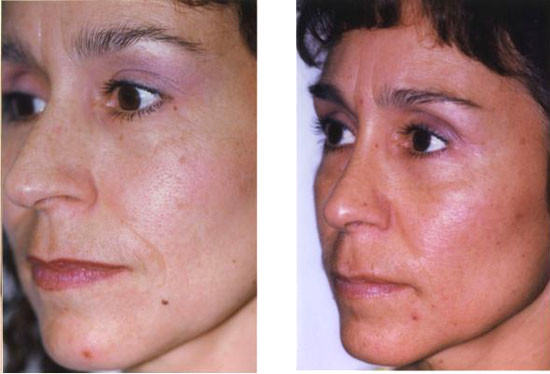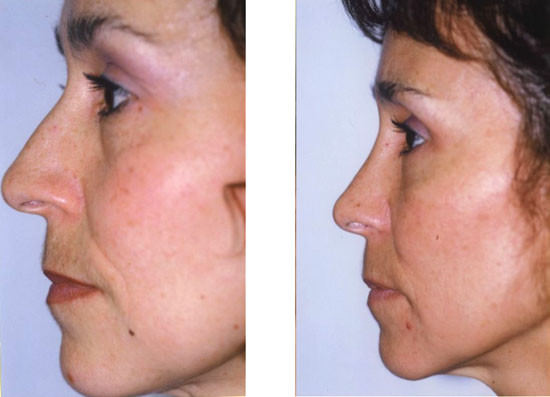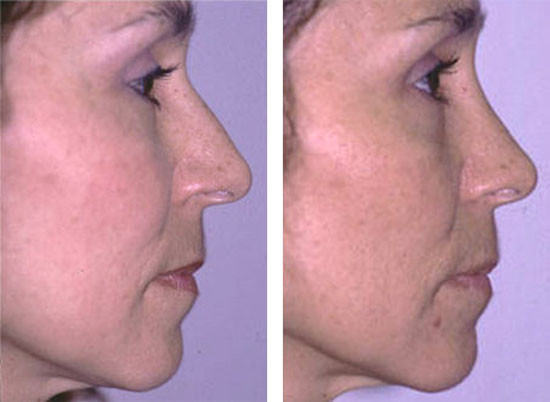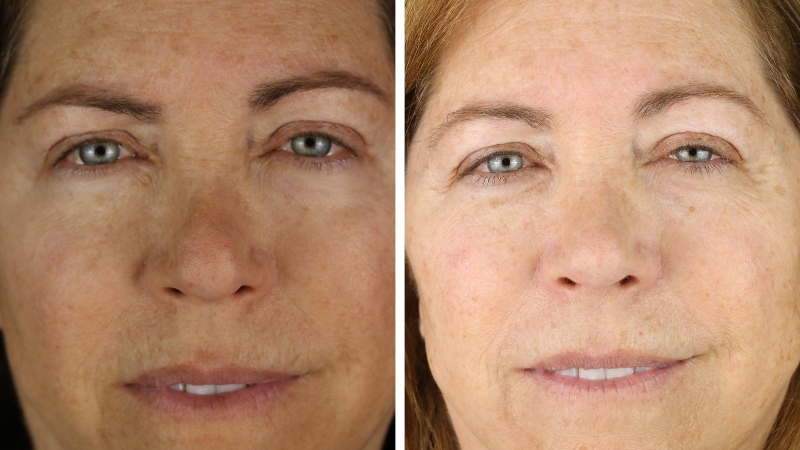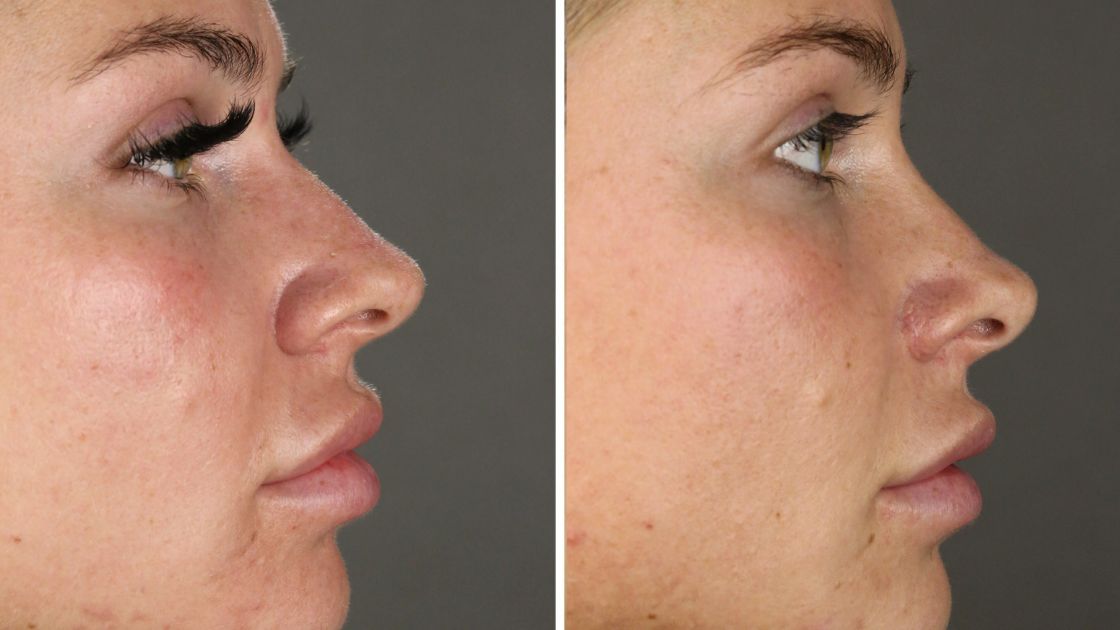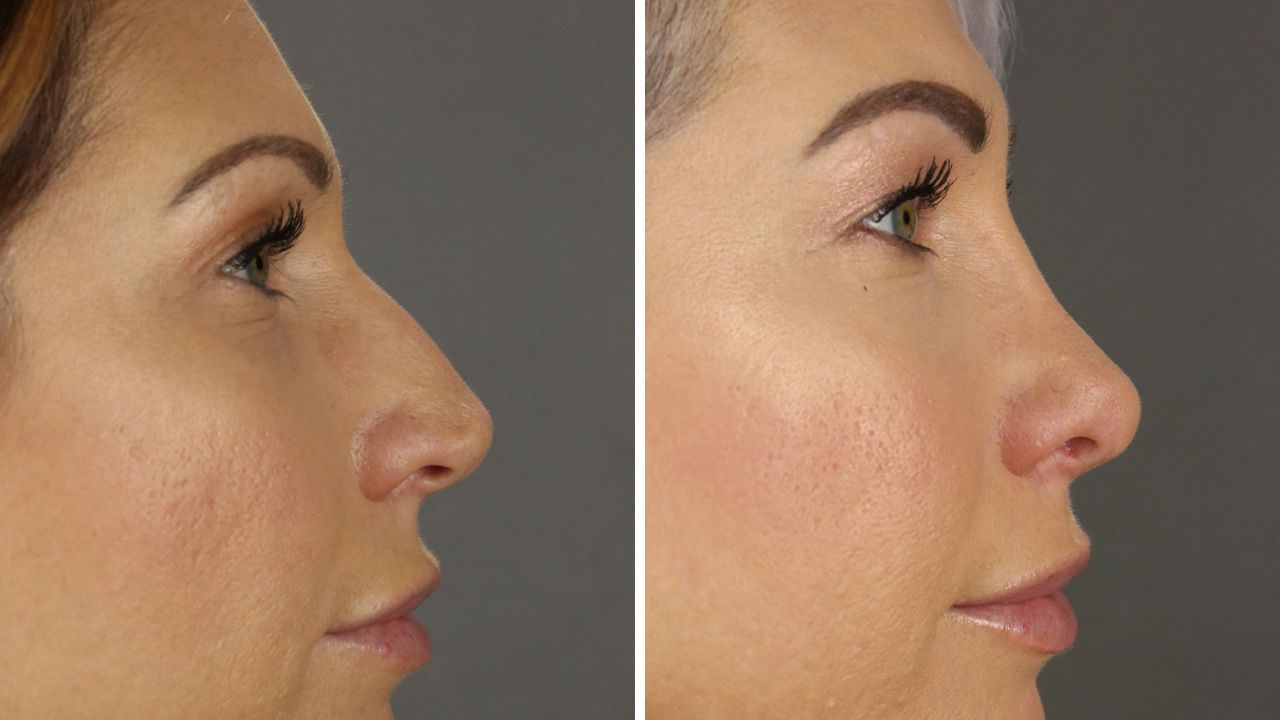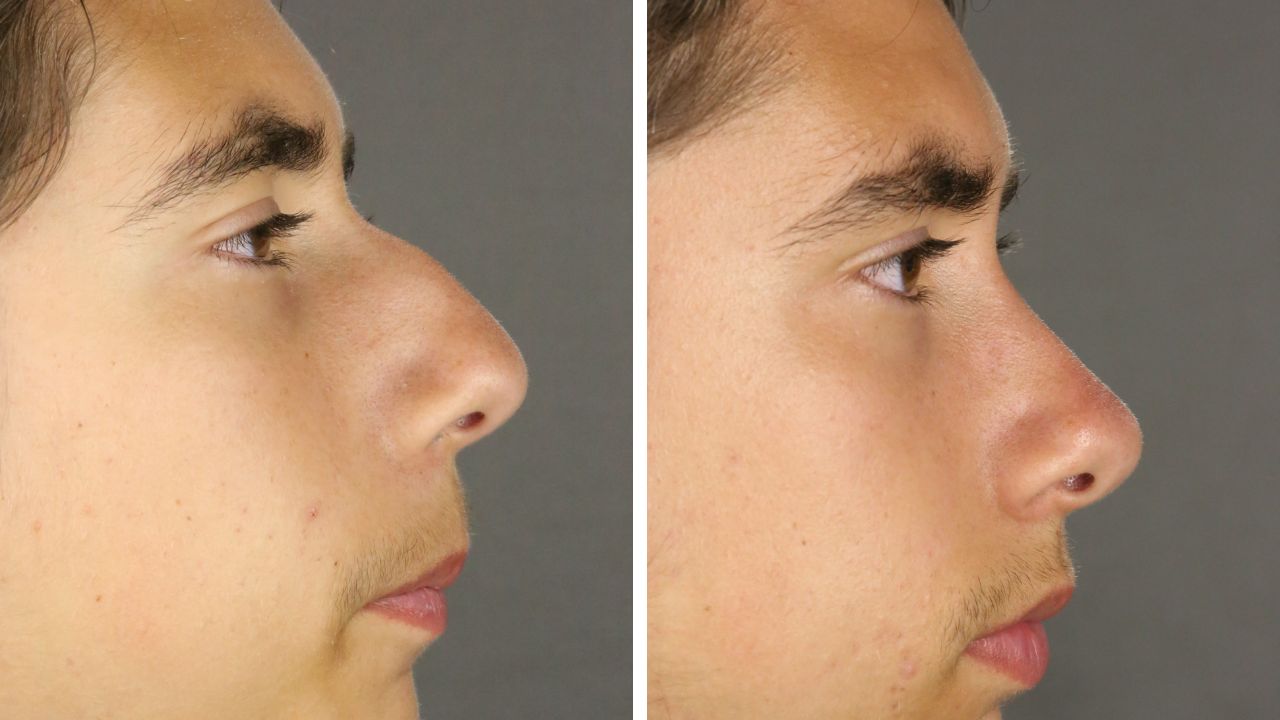The patient is a 35 year old woman who never really liked the shape or size of her nose. She thought it was “taking over her face” and was “her dad’s nose”. One day she decided to do something about it and sought consultation with a rhinoplasty surgeon.
Rhinoplasty Surgery
At her procedure, the tip was recessed, softened and rotated up slightly. Next, the “bump” was taken down and smoothed so the tip projected slightly past the bump area. The nose was next narrowed at its midpoint to not only create smoothness of the bump area but also to match the relative fine and narrow face and make the nose appear smaller.
Recessing the tip (making the tip stick out less) had several positive effects that improved the beauty of the tip . But recessing the tip can also make the nostrils flare more as the tip is moved backwards. This patient already had a long distance between the cheek and the nasal tip as can be seen on the side view photos and so the nostrils were already long prior to surgery. So, the final maneuver was to remove some of the nostril to shorten it. This is done by removing a lemon wedge shaped piece of nostril from the part of the nostril that attaches to the cheek. One can see on the side view rhinoplasty before and after view at the top that the postoperative view has less flaring (curve) at the base of the nostril. This final movement in the patient’s rhinoplasty surgery brought harmony to the parts of the nose and took away some of the noses sharp angles. The patient had a relatively angular face before the surgery and so surgery was directed at softening the nose and creating curves on the nose itself so the angularity of the nose would no longer harmonize with the angularity of the face.
Facial Plastic Surgery Results
The patient was very happy with the results of her rhinoplasty. She loved the new shape of her nose and thought it went better with her face.
The nose occupies such a small part of the geography of the face but because it is “the center of attention”, being right in the center of the face, it is there for everyone to see. The nose also somehow lends character to the face and , if the nose is too large, the character the nose brings might be a little too overbearing and may also take away beauty from the faces’ other beautiful features, like the eyes.
As can be seen from the description of the movements that were used during this patient’s rhinoplasty, the procedure of rhinoplasty surgery is performed in an orderly series of smooth and beautiful movements where one movement is performed and the result of that movement is immediately seen by looking at the skin of the nose. The next movement is, in a way, a response to the effect of the last movement and what the last movement has done to the shape of the nose. In this fashion the surgery proceeds, built on each prior movement and leads to a beautiful improvement from the harmony of the surgery itself.
What is a “Nose Job”
When plastic surgeons are speaking about cosmetic surgery of the nose they always use the term “rhinoplasty”. Patients who are to have rhinoplasty may also have breathing problems, most commonly caused by a deviated septum, which is the divider that separates the sides of the nasal airway into two parts. The septum can become bent over time or from trauma and block the airway on one or both sides and this can make it difficult to breathe. If the patient wants the breathing problem repaired at the same time as the rhinoplasty, the procedure is referred to as a “septorhinoplasty”. Septorhinoplasty is generally performed by a single surgeon who has a lot of experience with both cosmetic nasal surgery and surgery of the nasal airway. These two surgeries are better done together because the maneuvers (movements) used to perform both surgeries can be intertwined to get better results and to preserve and possibly improve on the nasal airway.
Many patients refer to rhinoplasty as a “nose job”. Rhinoplasty surgeons hear this term in consultation with patients and also in social situations and it has become so common so as to become an acceptable term to communicate cosmetic nasal surgery. Patients should feel free to use whatever term they feel comfortable with in their communication. Because the most important part is that patients need to tell the rhinoplasty surgeon what they do and don’t like about their nose so that a unique plan can be crafted to gain improvement and lend beauty to the nose and face.

